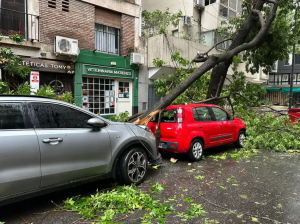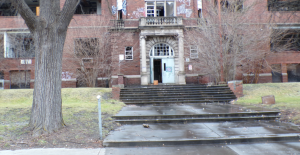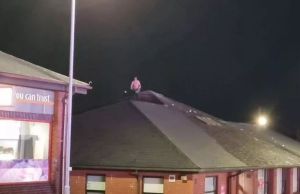
DC Alleyways: Housing returns
In a Capitol Hill back alley, you never know what to expect. You might find a chair that would be perfect in your living room or a garden, and even sustainable housing.
Alley houses, which were often found in DC’s streets, provided homes to 20,000 residents, the majority of them African Americans. In the 1930s, the Alley Dwelling Authority started removing the homes due to concerns about health and overcrowding. In 2016, the DC Council acted on the housing crisis that has plagued the city for 90 years. They passed zoning laws allowing new construction to be built in the alleys of the district.
Andrew Linn, Jack Becker and their architectural firm BLDUS had been established in 2013. They saw the zoning changes as an opportunity for creating sustainable housing and a climate-friendly environment in the District. Linn explains that Jack and I first met at Cornell on the very first day of Architecture School. We both wanted to create healthy homes that re-thought traditional materials and used them in new ways.
They moved to DC after graduation to turn their dreams into reality. Linn, his wife Hannah and a 1,900 square foot alley near Congressional Cemetery were looking for a home. BLDUS was able to use the lot as a showcase for its vision, while also providing a place for Linn and his family.
The priority was sustainability. Linn says that buildings are the leading contributor to climate change, and houses may be a major cause of cancer. It’s very easy to create an unhealthy home without realizing that it was built with cheap materials.
Linn Becker and Linn’s vision culminated in the two-story home that was the first on the East Coast to have a bamboo wall with insulation. Exterior bamboo walls have poplar bark paneling, and the interior walls use non-toxic paints like hemp oil or milk paint. The central skylight allows for light to enter, and a sassafras wall provides privacy. It also has the unintended benefit of making your house smell like rootbeer when it rains. The majority of materials used are from the US. This reduces the amount of carbon dioxide emitted during transportation. The design is also easy on your wallet. Linn Electric’s bill for August was just $30, and the Linn doesn’t have any solar panels installed on their roof.
BLDUS homes don’t look like your average Capitol Hill home. Linn says that people’s reactions to BLDUS’s homes can be classified as either “interesting” or “weird”, but that does not mean that they love or hate them. The wood and bamboo houses are based on a DC tradition, but these houses do not have precedents in DC or anywhere else in the United States.
BLDUS’s office is located in Anacostia as part of its commitment to think outside the box. Linn explains that “we saw that the majority of District architects clustered together in a handful of wealthy neighborhoods,” while Anacostia residents are “fighting an admirable fight for the integrity” and “village-like scale” in their historical district. The BLDUS Office is located in the Grass House which is a carriagehouse next to Frederick Douglass House. Linn says, “We’re grateful that new contextual homes will help preserve the historic fabric of the area.” We feel more equipped because of our location to create for such a complicated area.
BLDUS builds sustainable, healthy homes throughout the District. Not all are located in alleys. They have also built alley homes in Capitol Hill’s Overbeck Alley and Parkview’s Lois Mailou Jones Alley NW, and they are currently working on two alley houses at Petworth. Linn Becker are also teachers at Virginia Tech’s Washington Alexandria Architecture Center. They train architects on sustainability concepts.
Becker says, “We are constantly looking for ways to build new alley homes where it makes sense.” DC desperately needs new housing in every shape and size, so we’re happy to build high-quality apartments wherever possible.
Catherine Plume has been an environmentalist for most of her life. She is also a published author and a member active in the Sierra Club DC Chapter. Her opinions are not those of the organization.
Roof maintenance is essential to the durability and upkeep of your roof. For more information you can check right here where we give a better view of our services The Roof Technician residential skylight services in Toronto. Roofs are subject to wear and tear over time due to weather conditions, structural problems, or leaks. Professional roofing services offer comprehensive solutions including roof inspections, repair, re-roofing and installation of high quality roofing materials. Residential skylight repair and replacement services will protect your home from potential damage and ensure the integrity of the roof. Professional roofing services can help maintain the resilience and durability of your home, whether you’re fixing minor issues or considering a roof overhaul.





